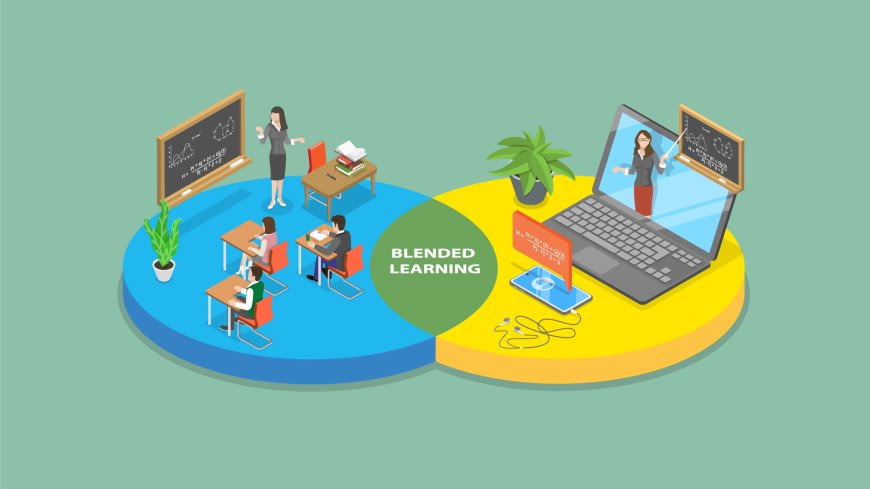Blended Learning: How Combining Online and In-Person Training Creates Better Learning Outcomes
Discover how blended learning combines online flexibility and in-person engagement to boost learning outcomes and employee performance.

Have you ever felt that a single training format just isn’t enough to achieve real impact?
In today’s fast-paced work environment, training isn’t just an HR task—it’s a core driver of business success. Deloitte research shows that employees who receive workplace training can boost their productivity by 37% compared to those who don’t.
The question is: Which training approach delivers the most lasting results?
For many organizations, the answer is blended learning—a thoughtful mix of online flexibility and the human connection of in-person sessions.
What is Blended Learning?
Blended learning combines online training with face-to-face instruction, allowing learners to benefit from the best of both worlds.
For example, imagine you run a digital marketing agency and want to upskill your team in data analytics:
-
Online: Your team completes Google Analytics and SQL courses via your LMS.
-
In-Person: You invite an industry expert to run a workshop on data-driven marketing strategies.
-
Collaboration: Employees work together on group projects and share insights in discussion forums.
This combination gives employees flexibility, keeps them engaged, and helps them apply what they learn more effectively.
Blended Learning vs. Hybrid Learning
While both terms involve mixing online and traditional formats, the difference is in how they are applied:
-
Hybrid Learning: Participants choose to attend either in-person or online.
-
Blended Learning: All learners experience both online and in-person components.
Why Blended Learning Works
-
Multiple Learning Methods Reinforce Knowledge
Using varied formats—videos, live workshops, simulations—helps solidify understanding. -
Empowers Individual Learning Styles
Employees can learn at their own pace, fitting training into their schedules without losing personal support. -
Cost-Effective and Scalable
Reduces travel, venue, and printed material costs while allowing easy scaling for larger teams. -
Highly Personalized
Training content can be tailored to each learner’s needs, strengths, and weaknesses.
Popular Blended Learning Models
-
Face-to-Face Driver: Classroom first, tech second.
-
Online Driver: Primarily online, minimal trainer involvement.
-
Rotation Model: Learners switch between stations, labs, and online modules.
-
Flipped Classroom: Learn theory online, apply it in class.
-
Flex Model: Learners control when and where they learn.
-
Enriched Virtual: Online with periodic in-person sessions.
-
À la Carte: Some courses fully online, others face-to-face.
Overcoming Challenges
Blended learning isn’t without hurdles:
-
Aligning goals across formats.
-
Trainer readiness for digital tools.
-
Maintaining engagement across environments.
-
Ensuring tech accessibility and reliability.
-
Tracking progress effectively.
Solution: Choose the right LMS, provide trainer upskilling, integrate gamification and collaboration tools, and track progress through analytics.
Getting Started with Blended Learning
-
Define Learning Objectives – Clarify what you want to achieve.
-
Select the Right Model – Match the approach to your organization’s needs.
-
Choose Tools & Platforms – LMS, virtual classrooms, mobile learning apps.
-
Implement & Monitor – Track participation, completion, and results.
-
Reward & Recognize – Use badges, certificates, or leaderboards.
-
Gather Feedback & Improve – Continuously refine the program.
Final Thoughts – From EdTech Türkiye
At EdTech Türkiye, we’ve seen organizations transform their training culture by embracing blended learning. When online flexibility meets in-person connection, learning becomes more engaging, measurable, and impactful.
So next time you plan a training program, ask yourself: Are we giving our people both the flexibility they need and the human connection they value?
That’s where the true power of blended learning lies.